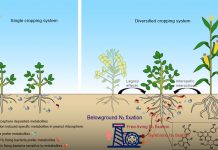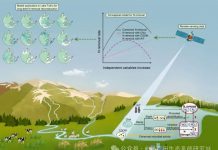Chun Jiang Bo Sun Huixin Li Yuji Jiang. Determinants for seasonal change of nematode community composition under long-term application of organic manure in an acid soil in subtropical China. European Journal of Soil Biology 2012 http://dx.doi.org-10.1016-j.ejsobi.2012.11.003.
Abstract
Seasonal changes in soil nematode community structure were investigated in a 9-year pig manure experiment on an acid soil in subtropical China. The manure treatments included: 1) no manure (CK); 2) low rate with 150 kg N ha−1 y−1 (ON1); 3) high rate with 600 kg N ha−1 y−1 (ON2); 4) high rate with 600 kg N ha−1 y−1 and 3000 kg of Ca(OH)2 ha−1 3 y−1 (ON2L). The total nematode numbers ranged from 72 to 880 individuals per 100 g dry soil represented by 27 genera and followed a decreasing order of ON2 > ON1 > ON2L > CK. The minimum of nematode abundance was observed in April before fertilizing while the maximum in July before maize harvesting. There was a succession from Rhabditidae and Cephalobus to Protorhabditis in the first 3 months after applying high rate manure. Nematode channel ratio and faunal analysis indicated disturbed soil food webs with bacterial decomposition under high rate manure whereas those with fungal decomposition under low rate manure. Variation partitioning analysis showed the climatic and soil factors independently explained 17.3% and 24.7% of the variation in nematode community composition respectively. Aggregated boosted trees analysis showed soil








